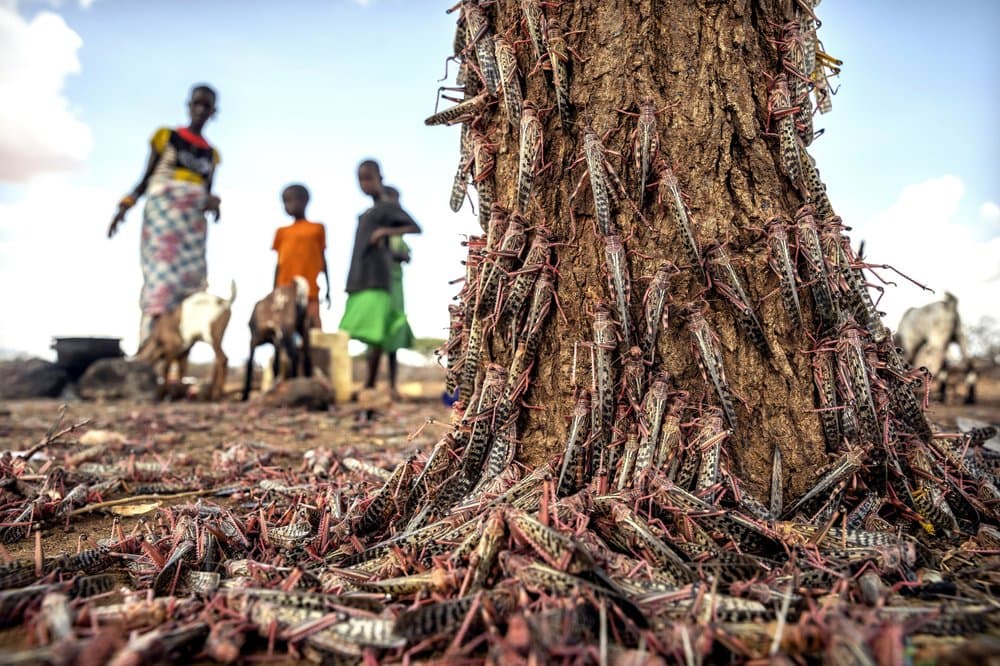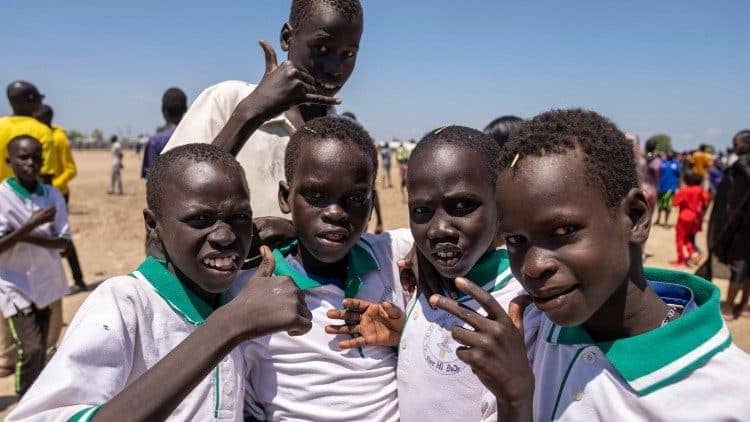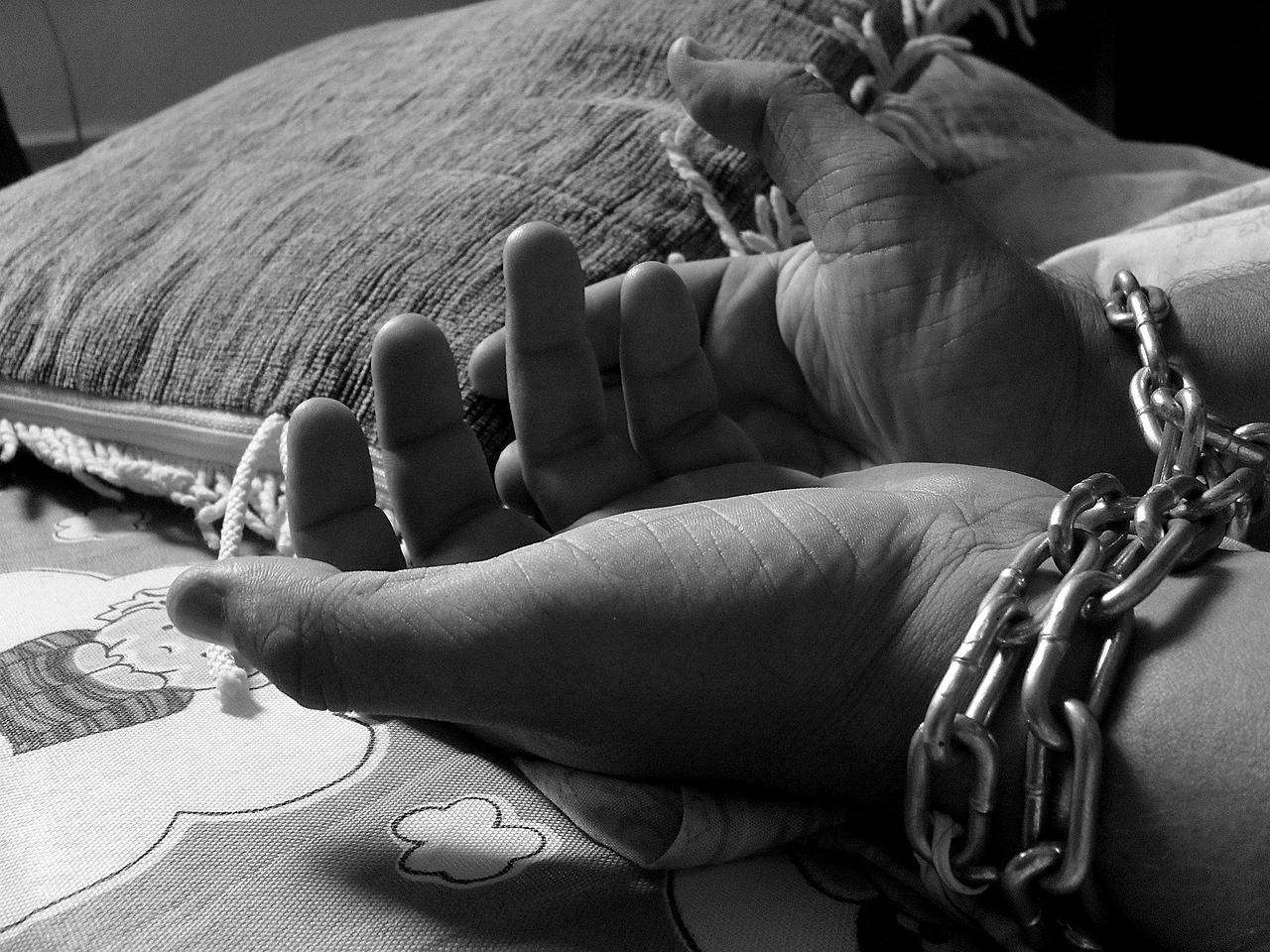YAOUNDÉ, Cameroon – A new report by the World Food Program says the spreading coronavirus could cause famine of ‘Biblical proportions’ in East Africa.
The UN agency estimates that some 20 million people are facing food insecurity across nine countries in the region: Burundi, Djibouti, Ethiopia, Eritrea, Kenya, Rwanda, Somalia and Uganda. That figure could increase to 43 million over the next three months.
But the situation could get even worse.
According to Catholic Relief Services (CRS), the international aid and development arm of the U.S. bishops, a possible desert locust invasion could further damage crops, thereby worsening the hunger crisis in the region.
Matt Davis, the CRS Regional Director for East Africa, told Crux coordination between agencies and governments is going to be more important than ever.
“Kenya, Ethiopia and other countries are responding as best they can, but the combination of these two simultaneous threats could take a massive toll on the people and economies,” he said.
Davis said CRS has close relationships with local Church and Caritas partners across East Africa, who are actually based in the areas where we work, no matter how remote, and whose staff are on the frontlines implementing a lot of the Catholic aid agencies programming.
“Because they are a part of these communities, they are well placed to continue carrying out our work within the rules and regulations established by their respective governments,” he said.
What follows are excerpts of Crux’s conversation with Davis about the twin crises in East Africa.
Crux: The WFP is warning that food insecurity could more than double in East Africa within three months as a result of the COVID-19 spread. How concerned are you about such an eventuality?
Davis: We’re concerned that both COVID-19 and the impact of the desert locusts are going to require a secondary humanitarian response. The fact that we have two crises going on simultaneously will eventually greatly increase the case load we and other humanitarian organizations are handling.
With both crises being cross-border issues, coordination between agencies and governments is going to be more important than ever. When you have such an incredible number of cases that you want to provide for, ensuring that you have appropriate coordination is going to be key in preventing an already bad situation from getting worse.
In Ethiopia, it’s crucial that the USAID-funded and CRS-led Joint Emergency Operation program has sizeable food stocks in country to meet the expected needs of severely vulnerable populations. Catholic Relief Services and its partners now distribute over 150,000 metric tons of food in an average year in Ethiopia, and this coming year could see far higher food needs.
What does that mean for your work in the region?
Across East Africa we have close relationships with local Church and Caritas partners, who are actually based in the areas where we work, no matter how remote, and whose staff are on the frontlines implementing a lot of our programming. Because they are a part of these communities, they are well placed to continue carrying out our work within the rules and regulations established by their respective governments.
Through these partners, we’re also able to get messages out through radio programs, flyers etc. so we can inform local communities of changes to programs or just try to inform people on the best ways to prevent the spread of COVID-19. For example, we distribute a lot of information on how to identify initial symptoms, and what to do if you’re feeling any of those symptoms.
We also want to make sure that our local partners on the ground are not exposed to potential cases of COVID-19. Therefore, we provide them with adequate protective equipment, hygiene items and set up strategically placed handwashing stations for added protection.
Compared to other parts of the world, confirmed cases of the COVID-19 in East Africa are still relatively few.
The relatively few cases of confirmed COVID-19 cases in East Africa is most likely a reflection of the lack of testing and challenges with contact tracing. The country of South Africa is testing 2,000 people a day. Kenya is testing around 600 per day.
Kenya, Ethiopia and other countries are responding as best they can, but the combination of these two simultaneous threats could take a massive toll on the people and economies. With basically all countries in the region enforcing some variation of COVID-19 restrictions and safety measures, a lot of people are unable to work.
In much of East Africa, the vast majority of people are employed by the informal sector, meaning day laborers who might get hired for a day or a week to work on a construction site or farm. When people can’t earn a regular income, or if a breadwinner loses a job or falls ill, that sparks a humanitarian situation where families end up needing cash transfers or food distributions in order to meet their immediate needs.
Desert locusts represent an additional concern that threatens to worsen the hunger situation dramatically. We believe the locust invasion will continue through June-July with increasing damage, wiping out crops and harming livelihoods. Locust swarms repopulate every three months or so. They would have begun laying eggs from the first week of April onwards.
During May, the eggs will hatch into grasshopper ‘bands’ that will form new swarms in late June and July, which coincides with the start of the harvest. Farmers are beginning to plant now, so those grasshoppers are going to take a toll on new crops, and then three months from now when the first harvesting of mature crops begins, swarms will again take a toll.
This, coinciding with the COVID-19 crisis, presents a serious threat to food security in the region.
How do you think COVID-19 will affect the food supply chain? What are the likely impacts of “a hunger epidemic” and how could that potentially complicate your work?
So far, we have still been able to transport and distribute food, with safeguards to protect staff and program participants from COVID-19. In the countries where we have large USAID- and WFP-funded emergency food programs, like in Ethiopia, Sudan and South Sudan, we’re essentially trying to distribute two rounds of food in one cycle so that people can have a viable stock of food before enhanced movement restrictions are potentially put in place, and to limit the number of times recipients need to come to distribution points.
In Ethiopia alone, we’re in the process of distributing around 51,000 metric tons of food to around 1.74 million people. At the moment, there are not a lot of documented COVID-19 cases in these rural areas, but if that changes, supply chains might also be cut off or at least delayed in an effort to contain the spread of COVID-19, which could make it far more difficult to reach the people who desperately need this food.
CRS Kenya will also increase its cash transfer program to cover additional vulnerable households. (Kenya does not have active food distribution projects; it relies solely on market-based approaches.)
It’s really important that regional governments have the support they need to prepare for a wider outbreak of COVID-19. In Kenya, Catholic Relief Services has been supporting the Ministry of Health and has helped train more than 4,200 healthcare professionals on early detection of COVID-19, isolation methods, and contact tracing of potential COVID-19 cases.
In Tanzania and Sudan, Catholic Relief Services is supporting Ministry of Health facilities on COVID-19 preparedness and control measures such as strengthening disease surveillance systems, awareness campaigns, purchasing personal protective equipment, providing vehicles to support to the COVID-19 response, and helping to disseminate crucial information through radio messages and posters.


















